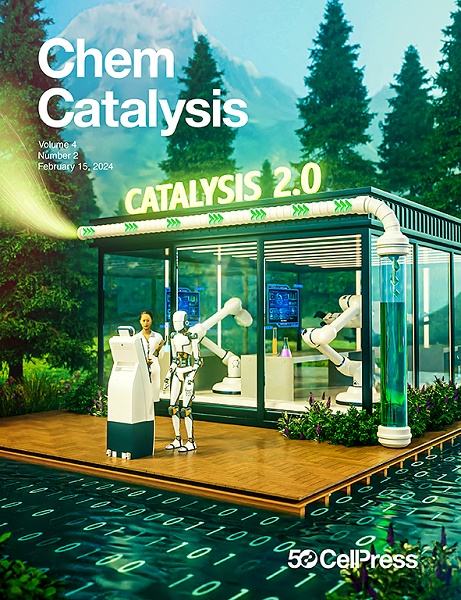Suppressing lattice oxygen oxidation in ruthenium oxide via equivalent substitution for sustainable oxygen evolution reaction in PEMWEs
IF 11.6
Q1 CHEMISTRY, PHYSICAL
引用次数: 0
Abstract
Developing cost-effective Ru-based electrocatalysts for the acidic oxygen evolution reaction (OER) is crucial for proton-exchange membrane water electrolyzers (PEMWEs). However, the prominent lattice-oxygen-mediated mechanism (LOM) at high oxidative potential leads to crystal destruction and poor operational stability for RuO2. Here, we report that introducing equivalent Ti4+ into RuO2 can significantly suppress the oxidation of lattice oxygen. Spectroscopic and theoretical results demonstrate that Ti4+ incorporation not only decreases the LOM ratio by weakening Ru–O bond covalency but also suppresses the dynamic activation of lattice oxygen at high oxidative bias by inhibiting Ru–O bond contraction. Potential-resolved differential electrochemical mass spectrometry (DEMS) verified the decreased LOM ratio (from 53.45% to 5% at 1.8 V) after Ti4+ incorporation. The equivalent-Ti4+-substituted RuO2 not only exhibits an extended operation time of over 500 h at 100 mA cm−2 but also withstands fluctuating voltage input (1.5–1.8 V) for 120 h in PEMWEs.

通过等效取代持续析氧反应抑制氧化钌中的晶格氧氧化
开发高性价比的ru基电催化剂用于酸性析氧反应(OER)是质子交换膜水电解槽(PEMWEs)的关键。然而,在高氧化电位下,突出的晶格-氧介导机制(LOM)导致了RuO2的晶体破坏和较差的操作稳定性。本文报道了在RuO2中引入等量Ti4+可以显著抑制晶格氧的氧化。光谱和理论结果表明,Ti4+的掺入不仅通过削弱Ru-O键的共价降低了LOM比,而且通过抑制Ru-O键的收缩抑制了高氧化偏置下晶格氧的动态活化。电位分辨微分电化学质谱(dms)验证了Ti4+掺入后LOM比从1.8 V下的53.45%下降到5%。等效ti4 +取代的RuO2不仅在100 mA cm−2下工作时间超过500 h,而且在PEMWEs中可以承受120 h的波动电压输入(1.5-1.8 V)。
本文章由计算机程序翻译,如有差异,请以英文原文为准。
求助全文
约1分钟内获得全文
求助全文
来源期刊
CiteScore
10.50
自引率
6.40%
发文量
0
期刊介绍:
Chem Catalysis is a monthly journal that publishes innovative research on fundamental and applied catalysis, providing a platform for researchers across chemistry, chemical engineering, and related fields. It serves as a premier resource for scientists and engineers in academia and industry, covering heterogeneous, homogeneous, and biocatalysis. Emphasizing transformative methods and technologies, the journal aims to advance understanding, introduce novel catalysts, and connect fundamental insights to real-world applications for societal benefit.

 求助内容:
求助内容: 应助结果提醒方式:
应助结果提醒方式:


